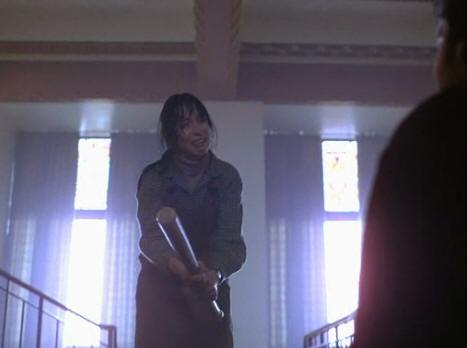When a film is good, we are drawn into the story, despite knowing that the characters are actually actors, that most often the place they are acting is a set, and that the clothes they wear are costumes. Even if we remain aware of all this, in the course of a movie we are likely to not think of all the technical elements that went into making it. Specifically, a regular audience never thinks about how films are lit. Perhaps some of you have read up on this or worked on films, and know something about lighting, maybe you even know that often films are lit from a fake ceiling. Lighting helps to establish a certain mood and feel for a film, and how a film is lit is always carefully considered before production begins. I thought it would be interesting to look at three films from one director that used different methods of lighting. It is no secret that I see Stanley Kubrick as the master of film. People are lucky if they create one masterpiece in life, he made no less than seven. He introduced many innovations into filmmaking, including with respect to lighting, so I will use his movies as examples.

Chronologically, the first film I want to look at is A Clockwork Orange. The film takes place vaguely sometime in the future, and although it says it’s in England, it’s very different from the England we know. Young men dressed in white with black hats beat and rape unsuspecting victims, prisons attempt radical brainwashing techniques to rehabilitate their inmates, and people light their homes from extremely powerful light bulbs. That’s right, most of the interior scenes are lit by extremely powerful incandescent light bulbs, the kind that, if looked at directly, will damage your eyes. The rest of the film was shot with natural light during the daytime, to help stay inside the films cheap two million dollar budget.

Kubrick’s most revolutionary use of lighting was brought out for his next film, Barry Lyndon. The film is an eighteenth century costume piece, and Kubrick went through great pains to make the film look authentic to this period. This includes costumes, props, and - obviously – lighting. The only sources of light in the film are the lights that could have been used at the time – sunlight and candlelight. That’s it. There are nighttime scenes that employ over a hundred candles, a dangerous fire hazard I’m sure, and a mark of Kubrick’s anal perfectionism. Candlelight cannot make a set bright enough to film on in normal circumstances, so to have the images show up correctly Kubrick employed a Zeiss lens. This was the first time the lens had been used in film, as it had been developed by NASA to explore the darkness of outer space.

The big technical innovation that The Shining is remembered for is its use of the steadicam. Although it had first been employed four years prior for the boxing scenes in Rocky, it was not yet widely used. Kubrick saw potential in the camera, and hired its creator Garrett Brown to use it to film most of The Shining. Now it’s used quite often. By contrast, the lighting of The Shining is more conventional. Much of the film takes place in front of giant windows on the ground floor of the overlook hotel, and since the film takes place mostly in the winter, we expect it to look white outside. This allowed Kubrick to simply put the lights right outside the window, and flood the set with light. These light bulbs were extremely powerful, so much so that the set caught fire and burnt down, and several films set to use the same studio space had to push their production dates back while the set was rebuilt.
Of course, there are many other filmmakers who have revolutionized how we see things in movies – Orson Welles, Victor Fleming – but usually the cinematographer is the one who is focused on the lighting of films. I’ll end with a relevant and little known fact. The soundstages used in the James Bond film The Spy Who Loved Me were some of the most expensive in film history, and it was so enormous that Kubrick visited the set, in secret, to work on the lighting of the film – such was his mastery of the subject.
When I was a kid I used to watch Home Movies on Adult Swim, a show about kids who try to make movies with a hand held camera. I remember the main character, who was the director, saying at one point that he was going to switch roles with his friend and become the actor, because every director wants to act, and every actor wants to direct. Hollywood keeps proving this statement true. Spike Lee regularly appears in his own movies, Tarantino has done it, Kevin Smith wrote Silent Bob for himself, David Lynch acted in Twin Peaks, Martin Scorsese, Mel Brooks, Woody Allen, Fritz Lang, the list goes on of directors who have appeared in their own films. Then there are those who have had full time jobs as both actors and directors, most notably Orson Welles and Clint Eastwood. Both of them can be studied in either context, and often appear in their own work. But what I’m getting to are the actors, who make it big in Hollywood, and then try their hand at directing. These films are what interest...
Comments
Post a Comment